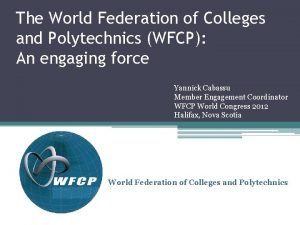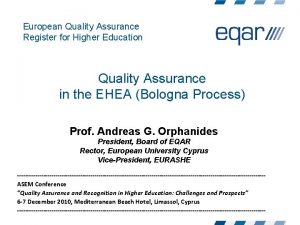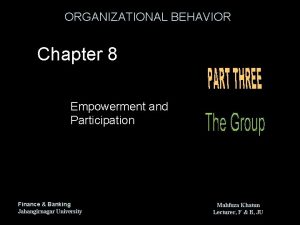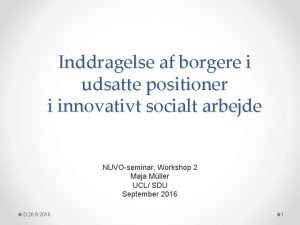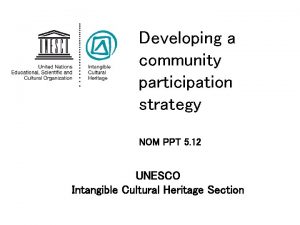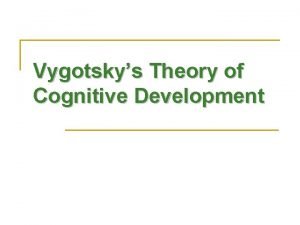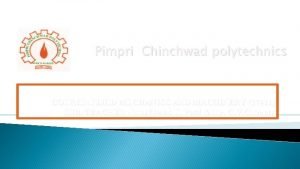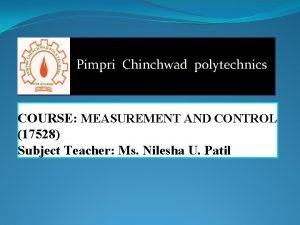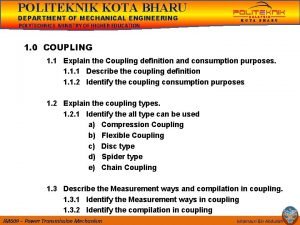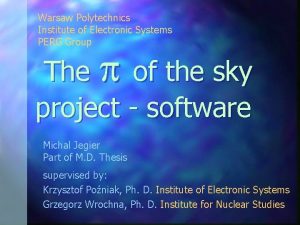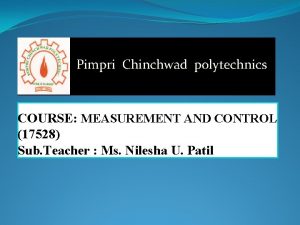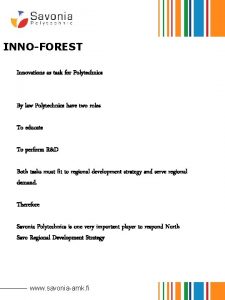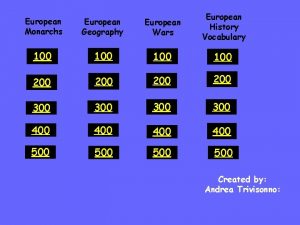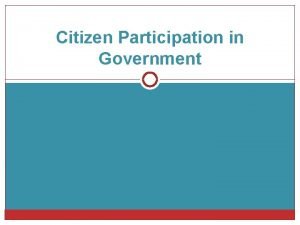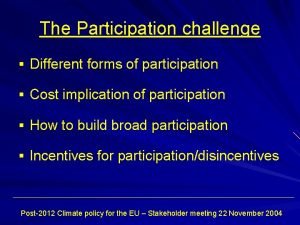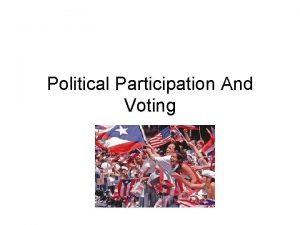The participation of Polytechnics in the European Higher


















- Slides: 18

The participation of Polytechnics in the European Higher Education Area 13. 4. 2005

The Bologna process • • • The Bologna Declaration 1999 The follow-up meeting in Prague 2001 The Lisbon Strategy 2001 The Copenhagen process 2002 The follow-up meeting in Berlin 2003 The follow-up meeting in Bergen 2005

The objectives of the Bologna process by the year 2010 • • • Easily readable and comparable degrees Uniform degree structures Establishment of a system of credits Increased mobility The European co-operation in quality assurance • The European dimension in higher education

Easily readable and comparable degrees • A common European/national context • Comparable, transparent degrees • Required starting (initial) level, substitute courses, an entrance to further studies • Curriculums based on competences • Diploma Supplement, an enclosure to the Diploma

Uniform degree structures • 2 levels: Bachelor and Master • First cycle: lower university degree, polytechnic degree • Second cycle: higher university degree, polytechnic postgraduate degree • Third cycle: Doctors degree


ECTS • Introduction of the European system of dimensioning higher education studies • ECTS (European Credit Transfer System) • Transfer and accumulation system • 1 credit unit = 1, 5 credit points • Defines the students´ workload

Establishment of a system of credits = The dimension system of studies • A Polytechnic degree is – 180 credit points (120 credit units/3 years) – 210 credit points (140 credit units/ 3, 5 years) – 240 credit points (160 credit units/4 years) • The students´ workload / academic year is 1600 hours, which is 60 credit points

Degree Diplomas • All degree diplomas after 1. 8. 2005 will be given in credit points • The conversion factor for students who have started their studies earlier is 1, 5 • Diploma text: – The system of measuring higher education studies in Finland is going to change. Credits will be replaced by the new unit of measurement, ECTS credit, on 1 August 2005. A students annual workload of 1, 600 hours will be worth 60 ECTS credits. The extent of degrees will remain unchanged.

Increased mobility • Recognition of knowledge and degrees • Financing: Socrates (2000 -2006), Leonardo da Vinci (2000 – 2006) and Erasmus Mundus (2004 – 2008) • Joint Degrees and Double Degrees

The European co-operation in quality assurance • Quality assurance system • Periodical check-ups • The quality of the provided education is accepted in all EU countries • Entrance to markets • ENQA network (European Network of Quality Assurance in Higher Education)

The European dimension in higher education • Dualism and the different objectives and tasks in the higher education area: level of required knowledge • Learning results: knowledge, skills and competence • Similarity between the university sector and the polytechnic sector: – Language and communication skills – International skills – Ethical aspects – Knowledge and communication skills

Curriculum • Academic Curriculum Core Analysis – Must know: basic knowledge – Should know: complementary knowledge – Nice to know: special knowledge • Evaluation of workload – The degrees´ workload compared to the study periods amount and methods of work • Consistent descriptions of the study content

The duration of an academic year • Vaasa Polytechnic will introduce the ECTSsystem from 1. 8. 2005 • The students´ workload during one academic year is 1600 hours/60 credit points and includes structured teaching, individual work, practical training, exams, written assignments. . • 22. 8. 2005 – 16. 6. 2006 (= 40 weeks) • Christmas holiday: 2 weeks, winter holiday: 1 week, independent studies during week 43 • Period 5, practical training and thesis

Dimensioning the practical training • Practical training to promote professional skills • Dimensioning according to actual workload • 1 credit point is approximately 27 work hours

Language skills • Statements in the degree diplomas: – Language of education – Language of maturity test – The language skills provided by Polytechnics ought to respond to the requirements within bilingual authorities concerning the second domestic language (424/2003, 6 §)

Language skills • Polytechnic grades 1 – 3 = satisfactory and grades 4 – 5 = good. • The evaluation of English and the second domestic language preparing studies • Compulsory language studies are at least 2 credit units / 3 ECTS – Foreign language (English or other) – Second domestic language – Finnish/Swedish language and communication

You need time to learn, not just to study
 World federation of colleges and polytechnics
World federation of colleges and polytechnics Contoh yang menunjukkan mengenai participant constraint
Contoh yang menunjukkan mengenai participant constraint European quality assurance register
European quality assurance register Spreading excellence and widening participation
Spreading excellence and widening participation Minnesota ignition interlock vendors
Minnesota ignition interlock vendors Autocracy citizen participation
Autocracy citizen participation Empowerment and participation in organizational behavior
Empowerment and participation in organizational behavior Widening participation and spreading excellence
Widening participation and spreading excellence Total participation techniques book
Total participation techniques book Arnstein ladder
Arnstein ladder What is consumer participation
What is consumer participation Leader participation model
Leader participation model Community participation ppt
Community participation ppt Nfhs illegal participation
Nfhs illegal participation Small business participation commitment document
Small business participation commitment document Milbrath
Milbrath Guided participation vygotsky
Guided participation vygotsky Gladiatorial political participation
Gladiatorial political participation Sports
Sports
